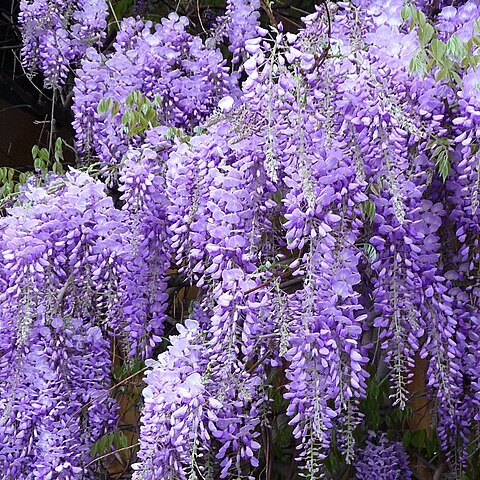Cal-tube hemispheric to campanulate, bilabiate; cal-lobes unequal, the 2 upper short or completely connate, the lowest one often elongate; standard reflexed, rotund, with 2 basal callosities; wings obliquely obovate, clawed, auriculate at base of the blade; keel up curved, auriculate at base; stamens 10, diadelphous; fr linear, flattened, dehiscent, many-seeded; woody twining vines with odd-pinnate lvs and handsome blue fls in large racemes at the end of short branches, appearing before the lvs are fully expanded. (Kraunhia) 6, e. Asia, e. N. Amer.
Shrubs, usually climbing. Lvs imparipinnate; leaflets entire, often stipellate; stipules small. Infls terminal, racemose, pendulous; bracts caducous; bracteoles 0. Calyx campanulate; 2 upper teeth short and slightly connate; 3 lower teeth longer, free. Corolla usually purple or lilac, rarely yellow or white. Vexillary stamen free or partly connate with the others into a closed tube; anthers uniform, basifixed. Style inflexed, glabrous; stigma terminal. Pod 2-valved, ± straight, dehiscent, many-seeded; sutures not thickened; seeds estrophiolate.


